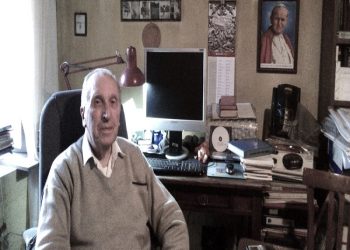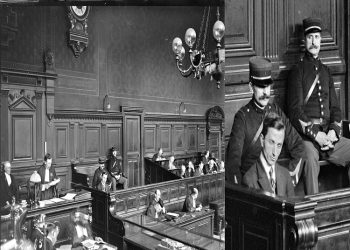Dashnor Kaloçi
Memorie.al publishes the unknown story of Abedin Nepravishëts originally from Libohova of Gjirokastra who after being educated in Istanbul, “High School of Imperial Administration” (MYLKIE) in the years 1907-1911, returned to the homeland and from that period of time and until April 7, 1939, he served in several senior positions and functions in the administration of the Albanian state. As deputy prefect and prefect of Durrës, Elbasan, Korça, etc., but who gave the greatest contribution in the ’30s when he served as Mayor of Tirana, working closely with the Italian architect, Brazini, who outlined the physiognomy modern of the Albanian capital. His arrest by the Communists after their coming to power in ‘44 and his sentence of political imprisonment, which he served until 1961 in Burrell Prison, where he was one of the oldest serving sentences there.
February 11, 2020 marked the 100th anniversary of the day when the newly elected government by the historic Congress of Lushnja, entered Tirana, recognizing it as the official capital of the Albanian state that had less than a decade since declaring independence. Since that day already marked in the history of Albania as the day of the proclamation of Tirana as the capital, ten decades have passed and during this one-century period at its head have been a large number of personalities, where undoubtedly each of them has left traces of in outlining the physiognomy of this capital of the youngest in Europe.
All the Mayors of the capital each have their share, but in this article, we are focusing on one of them, Abedin Nepravishta, who was lucky enough to be in charge of it at the time when Tirana would be outlined and took on the physiognomy of a modern European city.
Abedin Nepravishta led the Municipality of Tirana in the years 1933-1939, at which time some of the largest streets, buildings and architectural complexes were built, where some of them fortunately have withstood the test of time.
Abedin Nepravishta and the Libohovites in the Ottoman Empire
Abedin Nepravishta was born on September 19, 1889 in the village of Kuç in the district of Vlora, in which his father performed the function of deputy prefect of the sub-prefecture of Kurvelesh. His parents moved there from their hometown, Libohova in Gjirokastra, whose history is a special case in the centuries-old history of Albania. Thanks to the rare contributing values of some of its inhabitants in the history of the Ottoman Empire, Libohova from the 17th century gained some special privileges within this empire, such as those for the permanent mass education of her sons in Ottoman university institutions. As a result of this free funding, thousands of Libohovites became lawyers, doctors, officers, etc., who worked as senior and middle clerks in every corner of the empire of most time. From Lebanon, Bosnia to Istanbul, these Libohovians became the elite part of the Ottoman administration, contributing to the functions it served and also a good name for their country of origin, Albania, and their birthplace, Libohova. In Ottoman historical literature, Libohova has been referred to as the “Albanian City of Cadillars”, because in a way it became the Albanian “nursery”, which supplied the Ottoman Empire with more intellectuals, remaining to this day a small town, the sons of who fled for centuries to the metropolises, but leaving behind a good name.
Abedini graduated from the “High School of Imperial Administration” (MYLKIE)
Abedin Nepravishta could not escape the Enlightenment splendor of his civic tradition. Born to two parents, the first of whom had several generations graduating in the Ottoman capital, he studied at the university in Istanbul with the most western spirit of that empire, called the “High School of Imperial Administration” (MYLKIE) in the years 1907-1911. This university, the second of its kind in the world, was built by the French Empire in 1858, as a gift from the French state to the Ottoman Empire, in implementation of the Tanzimat reforms. The pedagogical staff of this university was composed of half French and Turkish, and in its auditoriums were taught 5 European foreign languages (3 compulsory and 2 optional). Admission to it was done with drastic criteria and during 56 years only about 30 Albanians studied. (Their names were published in 1940 in a special issue of the magazine “Hylli i Dritës”). With this excellent education he started his career as a graduate in 1911, Abedin Nepravishta, as: Secretary in the Ministry of Finance of the Ottoman Empire in 1911-1912, as Attaché in the Vilayet of Ioannina, and deputy prefect of the sub-prefecture of Përmet in 1912- 1913. He became the initiator of the proclamation of the Independence of Albania in Përmet on November 28, 1912, to be quickly transferred from the Albanian government headed by Ismail Qemali, as deputy prefect in Lushnjë in the years 1912-1913, and in Mallakastër in the years 1913-1914. In the years 1914-1921, Abedin Nepravishta was engaged in business, thus being recognized in the history of our country, as one of the pioneers of Albanian capitalism, which made him create considerable wealth.
Member of the Organizing Commission of the Congress of Lushnja and prefect in Durrës, Shkodër and Elbasan
Abedin Nepravishta was a member of the Organizing Committee of the Congress of Lushnja, which prepared in detail every proper step of this crucial congress for the Albanian state. And because of this, Abedin put large sums of money into the service of Congress for his well-being. Based on this fact, he was delegated and replaced a delegate of the Prefecture of Gjirokastra (who could not come for personal reasons), assisting as a delegate of this prefecture, throughout the proceedings of the Congress.
In the years 1921-1924, he would be appointed again in the first ranks of Albanian politics and administration, as: deputy prefect of the sub-prefecture of Tirana (during the coup d’etat of December 1921), as prefect of the prefectures of Elbasan and Shkodra in the year troubled 1922, as prefect of the prefecture of Durrës in 1923, and as prefect of the prefecture of Shkodra in the most turbulent political years, 1923-1924. Wherever he led in this period of time, he was presented with the image of an official endowed with a western mentality and culture, becoming a member of that constellation of statesmen who laid the foundations of modern Albania. Thus, Abedin Nepravishta was the one who took care in Shkodra for the establishment of the first secular gymnasium, which raised the bar of European education liberated from the obscurantist tutelage. In this city he also promoted harmony and tolerance between the two religions.
After Fan Noli’s government came to power and ousted her in December 1924, according to the memoir of Tafil Boletin (one of Isa Boletin’s sons), Abedin Nepravishta was left behind and liked to stay for almost a year. outside the state administration because he had to reflect on the direction he would give to his future career.
The first Albanian director of the Bank of Albania
After Zog came to power, at the end of 1925, Abedin Nepravishta was appointed to the position of the first Albanian Director of the Bank of Albania, thus being one of the ones who laid the foundation stones of the financial system of Albania. He was later appointed prefect of the Durrës Prefecture (1926-1928), sent there especially after the devastating earthquake of 1926, which knocked down almost half of the houses in that city, and under his leadership with the discipline of iron, was rebuilt within a one-year term. After a two-year suspension due to the arrest of his brother for anti-Zogist activities, Abedin Nepravishta, he was reappointed Prefect of the Prefecture of Korça, in the years 1930-1931, being the first prefect of the Muslim faith appointed by the government in Korça, i which won the admiration of the population and elites of the two constituent religions of that prefecture. During his relatively short stay in office in that city of Albanian culture, he was also written in the newspapers of the time, as “a leader with a contemporary tendency.”
In the years 1931-1933, Prefect of the Prefecture of Vlora
In the years 1931-1933 Abedin Nepravishta was appointed Prefect of the Prefecture of Vlora, probably the region with the highest political temperature in the history of that period in all of Albania. With the help of some Vlora patriots, such as: Jaho Gjoliku, chief of order of the Prefecture of Vlora and a number of intellectuals known as Shahin Abdullahu, etc., this prefecture became a model of exemplary discipline as a sign of the new modern state. During the time he served there, Abedin Nepravishta would also reveal an “anti-government conspiracy” which in the history of Albania is known as the “Vlora Movement”.
Abedin Nepravishta’s credit for the fact that for the first time in the history of Albania, he was directly responsible for the first celebrations of the anniversary of the Independence of Albania. On his initiative, the remains of Ismail Qemali were brought from Kanina to Vlora and under his leadership, for the first time in the centuries-old history of Vlora, its historic garden was built in the center of the city, with the tomb of Ismail Qemali inside.
From here, under his leadership, a magnificent ceremony was held (attended by over 10,000 people), for the funeral of Ismail Qemali, attended by several ministers of the then government. Abedin Nepravishta gave the keynote speech there and on the same day he became the initiator of the unveiling of the original flag of the declaration of Independence on November 28, 1912. During his stay in Vlora, since the Mayor was banned as “Chairman of the Vlora Movement”, Abedin Nepravishta, was also appointed as the Mayor of Vlora, in the years 1932-1933. During that time, in its direction for the first time in the urban history of Vlora, in addition to the historic park in its center in the tomb of Ismail Qemali, was built the historic Flag Square, and the equally historic boulevard, Vlora-Skelë. For these works where he made a great contribution, today one of the streets of the city of Vlora bears his name.
Mayor of Tirana
Abedin Nepravishta was the Mayor of Tirana in the years 1933-1939, exactly in the years when our capital performed with the rhythms of the western standard metamorphosed from a medieval city, to a modern city like the capitals of the Balkans. In the first days of his appointment to that position, he became the drafter of the first modern urban plan of Tirana, designed by Armando Brazini, one of the most genius architects of Italy and wider Europe. For this he went several times to Rome, where he was cordially received in the studio of the famous architect. Under his leadership during the years 1933-1939, in Tirana was completed a complete urban and architectural system consisting of those squares, boulevards and buildings, which even today after 80 years represent the “neural network” of the Albanian capital to a large extent. generally unchanged by any regime, of the center of the Albanian state.
Under the direction and care of Abedin Nepravishta, in the years 1933-1939 in Tirana was built:
- Skanderbeg square”
- The Bank of Albania
- Deshmoret e kombit Boulevard”
- Hotel “Dajti”
- The main bridge over Lana
- Palace of Brigades
- The road Durres
- Kavaja Street
- Dibra Street
- Elbasan Street
- Tirana Water Supply
- Hundreds of villas of civil servants
As well as a host of social buildings such as cinemas, libraries, orphanages, asylums, factories, shops. Under his leadership, another complex was designed and started, such as the Prime Ministry, the former Central Committee, the Central Corps of the Polytechnic University, the University of Arts, the University Rectorate, which was completed after the occupation of the country, etc.
Abedin Nepravishta in the British Encyclopedia
Abedin Nepravishta, would be among the first two Albanian officials since 1937, to be included as a separate voice in the British Encyclopedia, the largest encyclopedia of that time. Then he was interviewed by the biggest newspapers of Vienna, Paris, Rome, Istanbul, etc. He brought to Albania and delivered a speech at the grave of our national poet, Naim Frashëri. In Albania, publicists and well-known personalities of political life would write about him, such as: Tajar Zavalani, Gjergj Bubani, Nebil Çika, etc. He considered it as the greatest pride in those years that he became the political spokesman of the hundreds of Albanian intellectuals educated in the West, who were being appointed in Tirana.
After April 7, 1939, he did not leave Albania
Abedin Nepravishta was one of the Albanian politicians who on April 7, 1939, not only did not leave Albania, as some of the ministers and deputies did, but decided to stay in Tirana. Under his leadership and dozens of officials of the Municipality of the Albanian capital, unable to meet them with weapons, took part in several protest demonstrations against its occupiers. For this fact, Abedin Nepravishta was among the first Albanians to be deported from Italy for their anti-fascist convictions and activity (which was proved in his trial in 1945, Jaho Gjoliku, considered by the communist regime as one of the symbols of anti-fascism). Upon his return from exile, he engaged in trade, remaining to the end a consistent antifascist. Although he did not attend the Peza Conference due to his age, he greeted him, acting as in the Lushnja Congress, supporting him financially. All his houses in Tirana, etc., became the headquarters of the National Liberation Front and the illegal anti-fascist base.
Most of his relatives, younger than him, joined the ranks of the Anti-Fascist War, while he personally met Enver Hoxha in 1942, at the home of a mutual friend, Syrja Selfo, and agreed in principle to the need for an Antifascist Front in every city of Albania, as in the case of France where the ruling socialists and the communists in the war against Nazism.
Arrested by the Communists and served in Burrel Prison until 1961
Abedin Nepravishta would be arrested immediately after the communists came to power and although Koçi Xoxe tried fiercely to find evidence to accuse him of being a collaborator, it was not possible and so he was not included in the Special Court of those considered collaborators and were convicted in March 1945. As a unique case, the trial of Abedin Nepravishta was conducted alone and with a single witness, accusing him of being licensed during the German occupation to trade regularly in Italy. When he indicated that the Germans had the rule of licensing only those who knew German, the trial panel closed the trial an hour after its inception and withdrew to decide. Then the mayor, as he read the measure in 20 years, finally said that the reasoned decision would come later. Abedin Nepravishta is probably the only politician whose reasoned decision was never clarified. For 75 years his family searched every archive to find him, but he was never found. In the 1950s he was the oldest in prison and was humorously called the “Rector of Burrell University”. Abedin was released in April 1961 and lived for 7 years with his children living in the capital. In the years 1968-1975, he lived in Fier, where he passed away in 1975, surrounded by 4 sons and a daughter, while the other girl was married to Fejzi Hoxha, the personal doctor of Enver Hoxha and Ramiz Alia.
Abedin Nepravishta lived 90 years, of which 30 in prison and internment by fascism and communism, being the oldest Mandela (60 to 90 years old) of Albanian communism and probably of Europe. Based on this fact, the Presidency of the Republic, a few years ago honored him with the high title “Honor of the Nation” and he is among the few politicians, whose name bears two streets of the cities of Tirana and Vlora. This was more or less the story of Abedin Nepravishëts, which Memorie.al is publishing on the occasion of the 100th anniversary of the proclamation of Tirana as the capital, based on the memories left by him in manuscript and the testimonies of some of his descendants. /Memorie.al





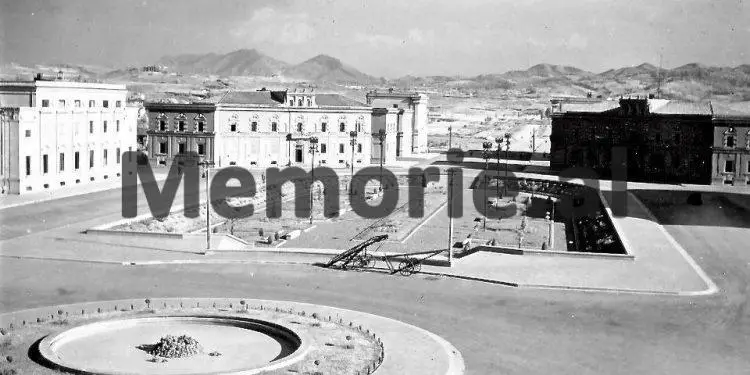
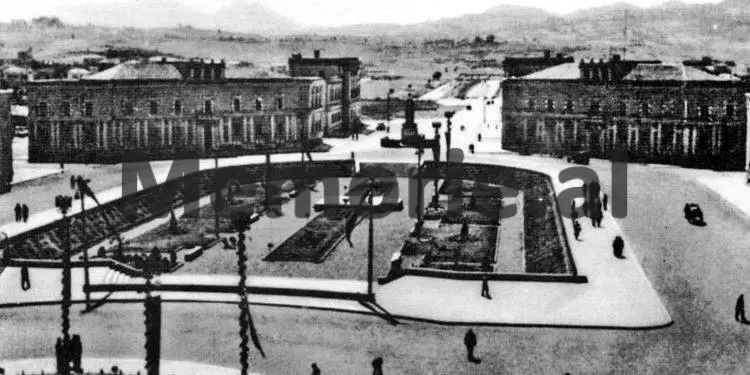
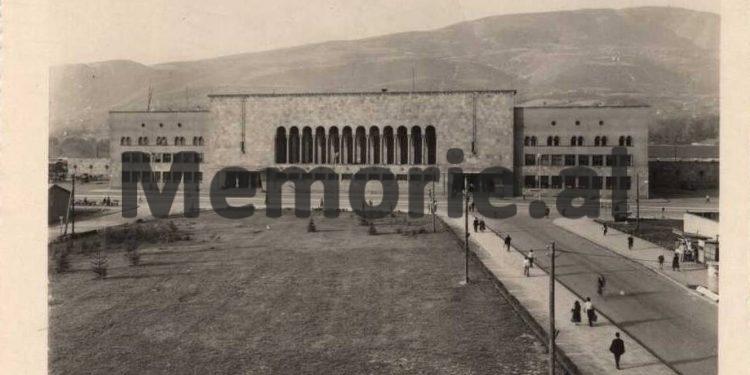
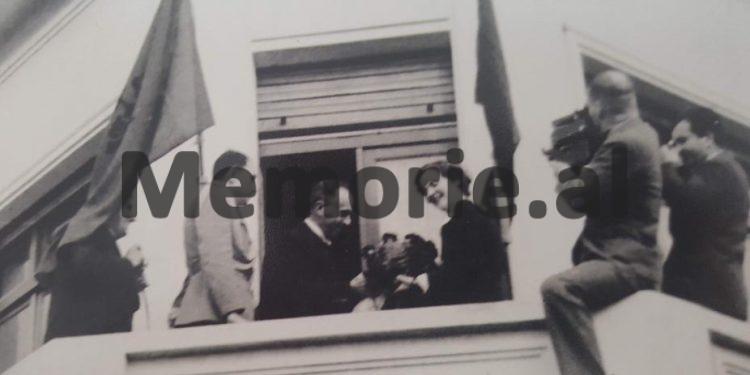
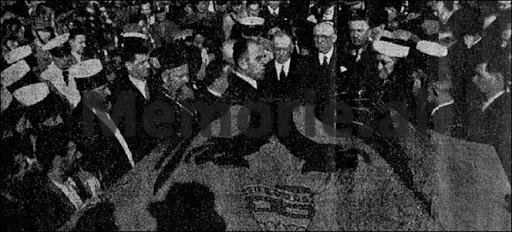


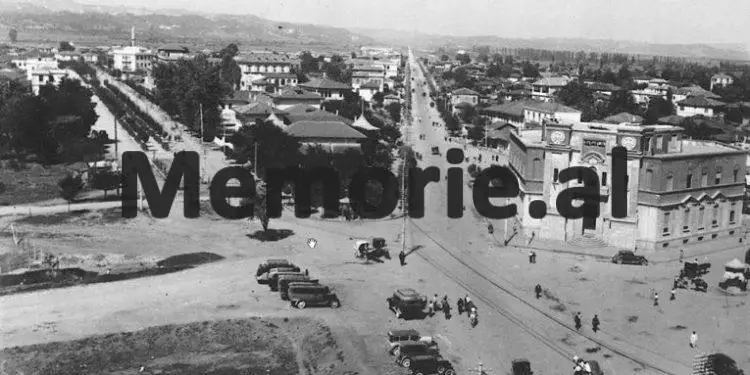
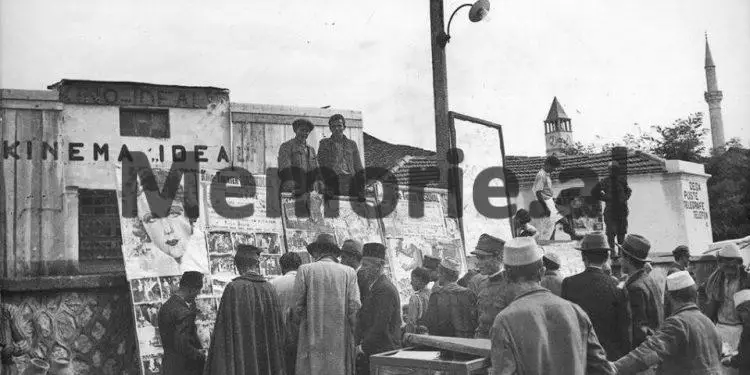
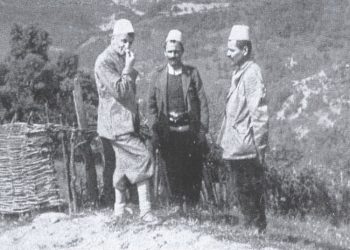
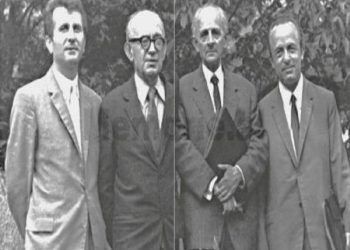
![“We hosted the German friend with wine, ‘Moskat’ raki that Enver [Hoxha] used to drink, but in his villa, he told me: ‘Hey Belul, who told you to accompany Strauss…?’”/ The rare testimony of the former Chairman of the Pogradec Committee](https://memorie.al/wp-content/uploads/2025/11/jozef-shtarus-350x250.jpg)

